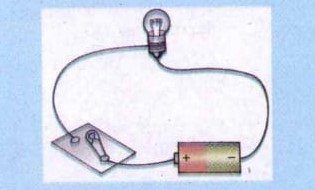Draw diagrams representing the atomic structures of the following:
Oxygen atom
To draw the atomic structure of an oxygen atom, we will follow these steps:
Step 1: Identify the Symbol and Atomic Number
- The symbol for oxygen is O.
- The atomic number of oxygen is 8.
Step 2: Determine the Number of Protons and Electrons
- Since the atomic number is 8, this means that an oxygen atom has 8 protons.
- In a neutral atom, the number of electrons is equal to the number of protons, so there are also 8 electrons.
Step 3: Determine the Mass Number
- The mass number of oxygen is 16.
- The mass number is the sum of protons and neutrons. Therefore, if there are 8 protons, we can find the number of neutrons:
- Mass number = Number of protons + Number of neutrons
- 16 = 8 + Number of neutrons
- Number of neutrons = 16 - 8 = 8 neutrons.
Step 4: Write the Electronic Configuration
- The electronic configuration of oxygen can be represented as:
- The first shell (K shell) can hold a maximum of 2 electrons: 2
- The second shell (L shell) can hold a maximum of 8 electrons, but for oxygen, it holds 6 electrons.
- Therefore, the electronic configuration is 2, 6.
Step 5: Draw the Atomic Structure
1. Draw the nucleus: Represent the nucleus as a small circle in the center. Inside this circle, write the number of protons and neutrons:
- Protons: 8
- Neutrons: 8
2. Draw the electron shells:
- Draw the first shell (K shell) as a circle around the nucleus and place 2 electrons in it.
- Draw the second shell (L shell) as a larger circle around the first shell and place 6 electrons in it.
Final Diagram
- The final diagram should show:
- A central nucleus with 8 protons and 8 neutrons.
- The first shell with 2 electrons.
- The second shell with 6 electrons.
- The symbol for oxygen is O.
- The atomic number of oxygen is 8.
- Since the atomic number is 8, this means that an oxygen atom has 8 protons.
- In a neutral atom, the number of electrons is equal to the number of protons, so there are also 8 electrons.
- The mass number of oxygen is 16.
- The mass number is the sum of protons and neutrons. Therefore, if there are 8 protons, we can find the number of neutrons:
- Mass number = Number of protons + Number of neutrons
- 16 = 8 + Number of neutrons
- Number of neutrons = 16 - 8 = 8 neutrons.
- The electronic configuration of oxygen can be represented as:
- The first shell (K shell) can hold a maximum of 2 electrons: 2
- The second shell (L shell) can hold a maximum of 8 electrons, but for oxygen, it holds 6 electrons.
- Therefore, the electronic configuration is 2, 6.
1. Draw the nucleus: Represent the nucleus as a small circle in the center. Inside this circle, write the number of protons and neutrons:
- Protons: 8
- Neutrons: 8
2. Draw the electron shells:
- Draw the first shell (K shell) as a circle around the nucleus and place 2 electrons in it.
- Draw the second shell (L shell) as a larger circle around the first shell and place 6 electrons in it.
- The final diagram should show:
- A central nucleus with 8 protons and 8 neutrons.
- The first shell with 2 electrons.
- The second shell with 6 electrons.
Topper's Solved these Questions
Similar Questions
Knowledge Check
Which of the following Venn diagrams correctly represents the relationship between the following classes?
A) Electron
B) Proton
C ) AtomA B
B C
C D
D
Structure of atom
View SolutionDraw a diagram depicting a divisional structure.
View SolutionDraw a labelled diagram to show the structure of earth.
View SolutionThe Structure Of Atom
View SolutionDraw the circuit diagram to represent the circuit shown below.

View SolutionDraw electron-dot structures with circles and line structures of the following molecules :
Oxygen (O2)
View SolutionDraw the venn diagram that best represents the relationship amongst the following classes:
Atmosphere, Hydrogen, Oxygen
View Solution
